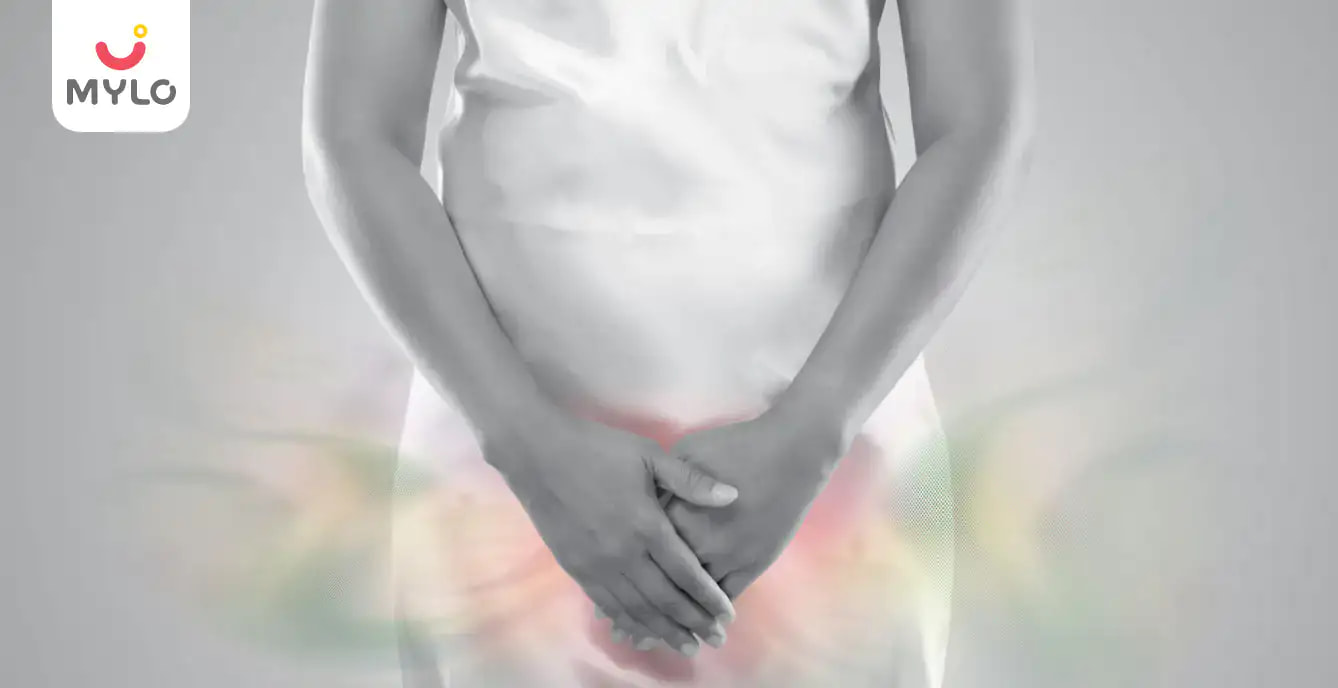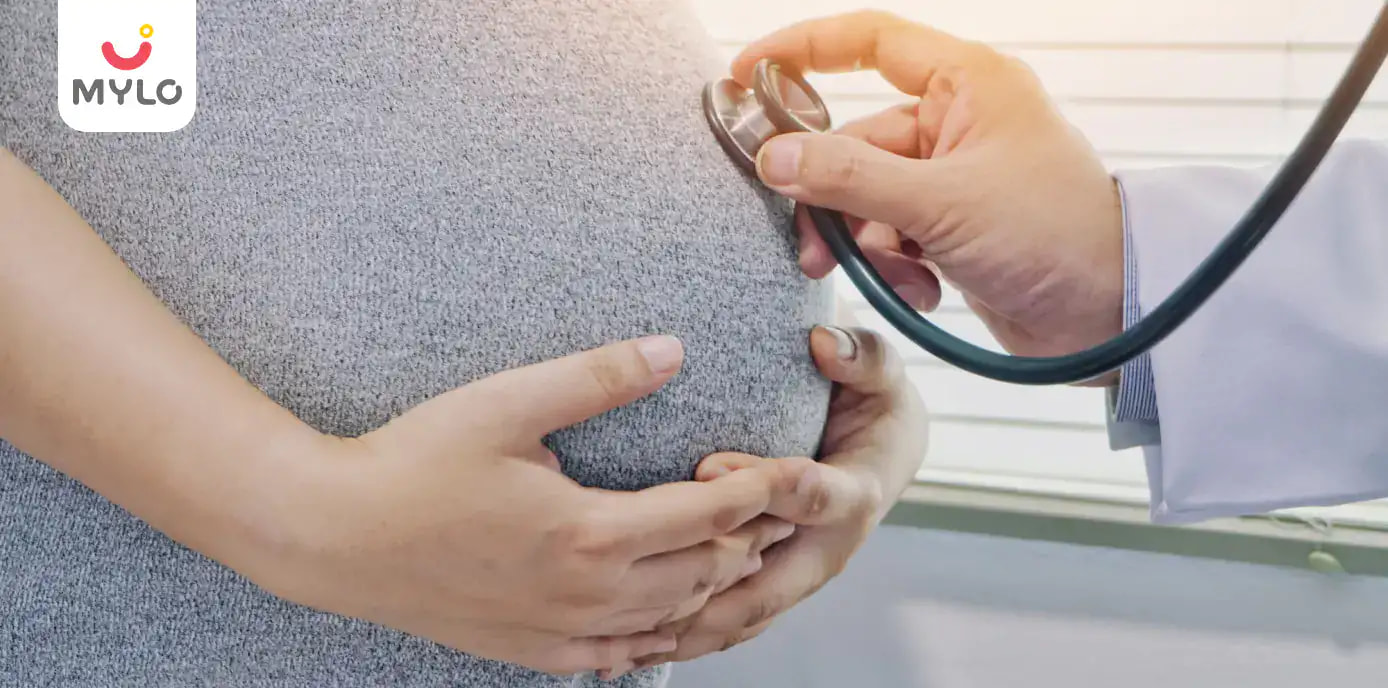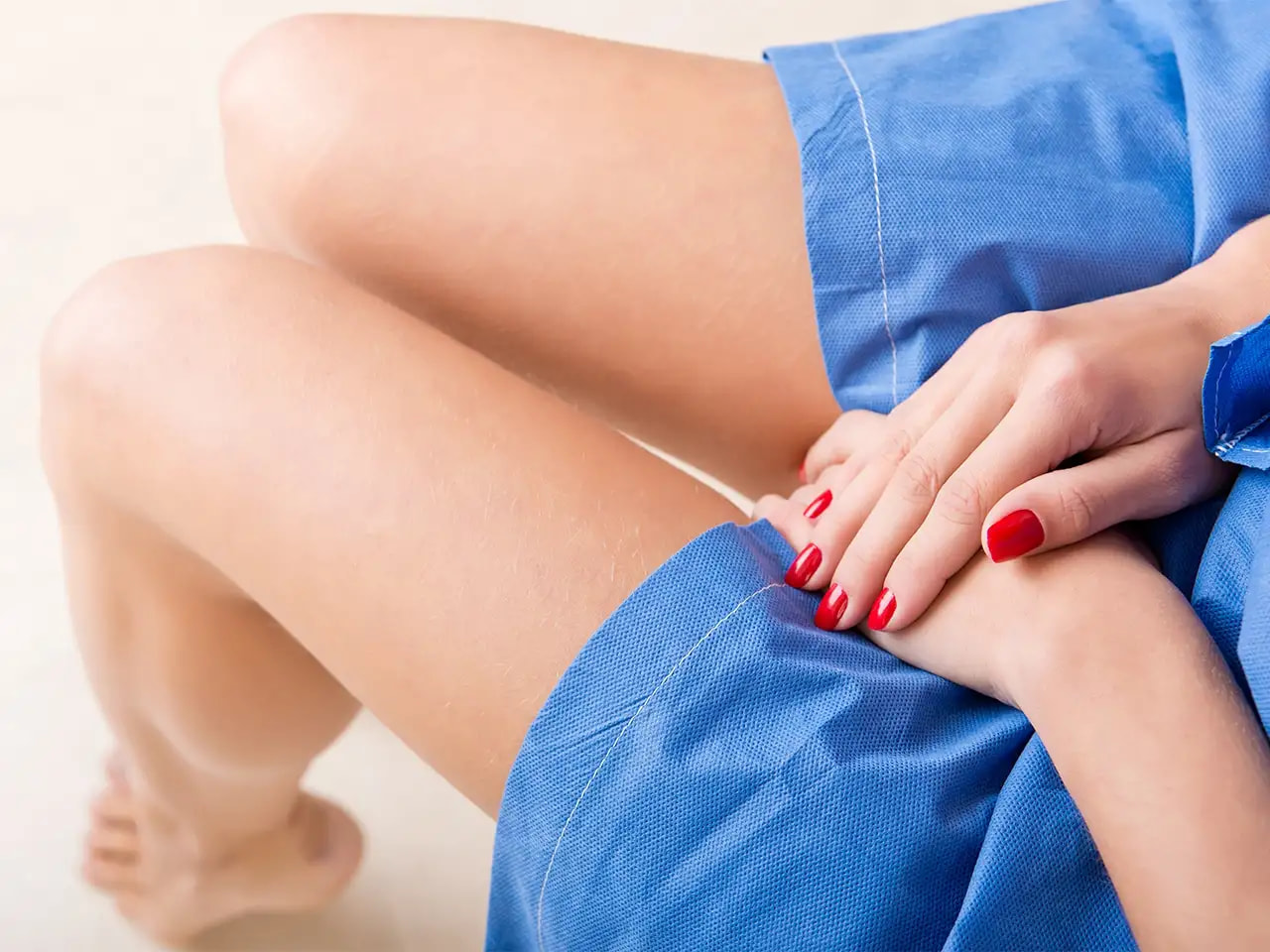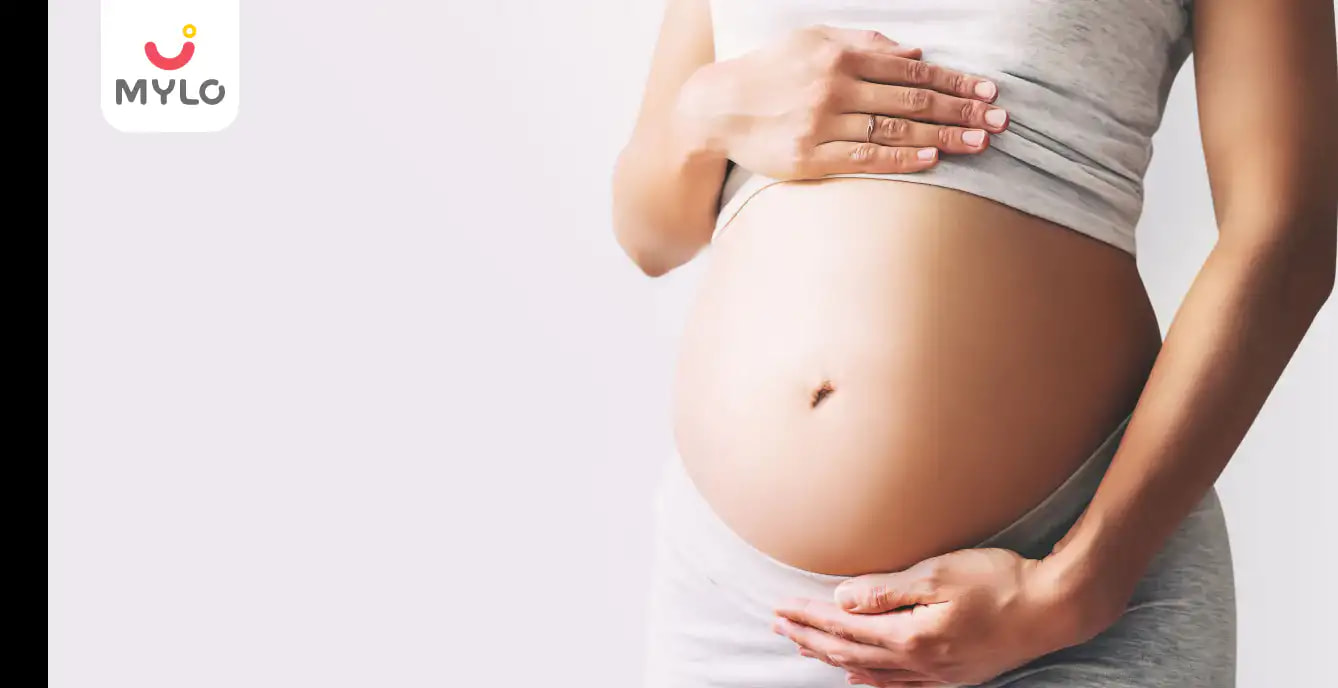Home

Illnesses & Infections

Prurigo of Pregnancy: Causes, Symptoms & Treatment
In this Article
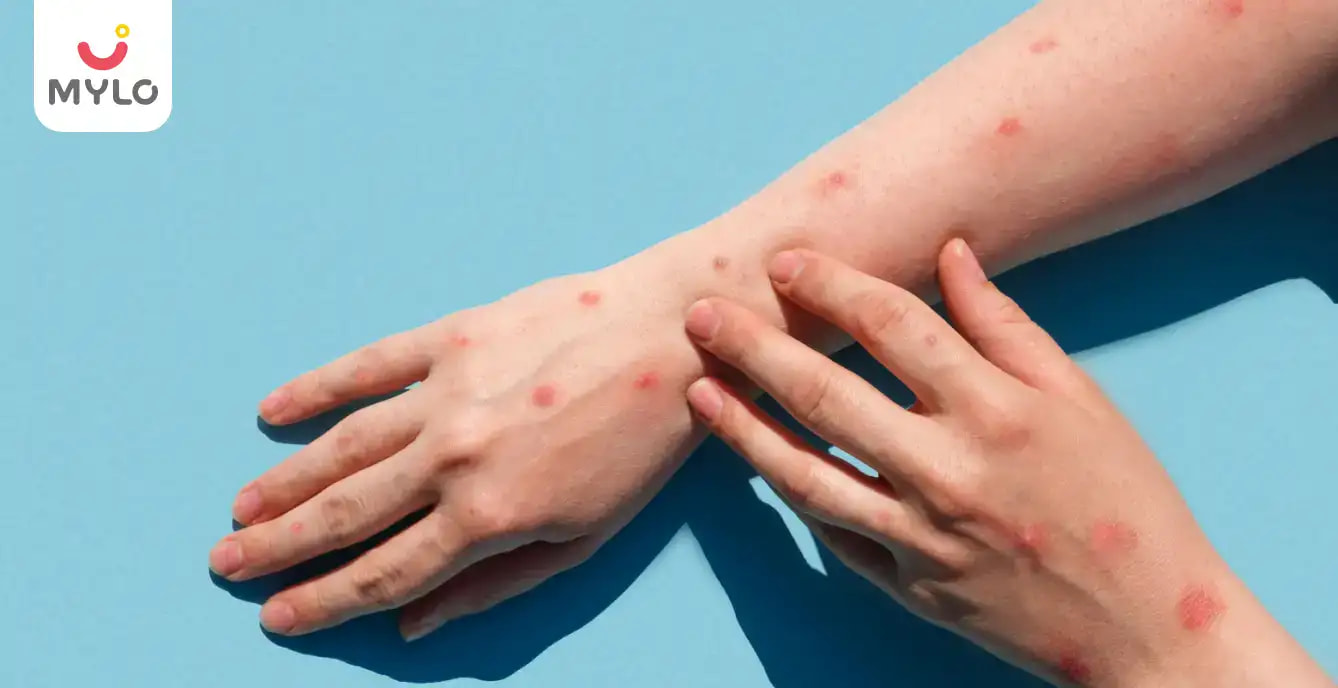
Illnesses & Infections
Prurigo of Pregnancy: Causes, Symptoms & Treatment
Updated on 3 November 2023
What exactly is pregnant prurigo?
Prurigo during pregnancy, also known as pregnancy itch, is a common condition that can affect expecting mothers. It is characterized by an intense itching sensation that can be very uncomfortable.
There are many potential causes of prurigo during pregnancy, but the most common include hormonal changes, skin irritation, and allergies.
Prurigo of pregnancy can occur at any time during the course of pregnancy however it is most common during the second and third trimesters. These itchy bug bite-like bumps during pregnancy do not cause any harm to the baby or the expecting mother. And also, they are easily treatable.
What does prurigo in pregnancy look like?
Prurigo during pregnancy can be defined as an itchy skin condition that commonly occurs during pregnancy. The most common symptoms of prurigo during pregnancy include intense itching and small, raised bumps on the skin. The bumps may be red, brown, or yellow in color. Sometimes they may also look like acne or a rash.
Where does the prurigo of pregnancy start?
Prurigo of pregnancy is generally observed at joints and in the skin folds thus it usually starts behind the elbows and knees. However, it can also show up on the arms, knees, shoulders, and stomach (belly).
Difference between prurigo & PUPPP rash during pregnancy
Pruritic urticarial papules and plaques of pregnancy (PUPPP) and prurigo of pregnancy are both a type of rash that develops during pregnancy. However, PUPPP usually occurs in areas where the skin is stretched due to the growing fetus such as the abdomen, thighs, hips, etc. Whereas, prurigo of pregnancy is observed behind the elbow and knees and in skin folds. Furthermore, PUPPP is often observed in the third trimester whereas prurigo of pregnancy can happen at any time.
Symptoms of prurigo of pregnancy
Commonly observed symptoms of prurigo of pregnancy include tiny bug bite-like bumps that may:
-
Itch a lot
-
Be discolored
-
Be clustered together covering large areas
-
Be scaley or flakey
-
Look like acne or a rash
Causes of prurigo of pregnancy
There are a number of different factors that can contribute to the prurigo of pregnancy. Some of the most common include:
-
Hormonal changes: The increased levels of hormones during pregnancy can cause skin irritation and dryness, which can lead to itchy bug bite-like bumps during pregnancy.
-
Acne: Pregnancy can cause hormonal fluctuations that can lead to acne breakouts. This can be very irritating and can aggravate prurigo.
-
Eczema: Eczema is a skin condition that can be exacerbated by pregnancy. It can cause intense itching and can be a contributing factor to prurigo.
-
Diet: A poor diet can also contribute to prurigo. Foods that are high in sugar and carbohydrates can trigger inflammation and can make the itching worse.
Diagnosis of prurigo of pregnancy
Prurigo of pregnancy is often diagnosed through a physical exam that is often done during routine pregnancy checkups. The doctor may also take the patient’s history to know when the problem started. In some cases, doctors may also conduct some blood tests in order to rule out any other underlying condition such as an autoimmune disorder or cholestasis of pregnancy that presents similar symptoms.
Treatment of prurigo of pregnancy
There are a number of ways to treat and manage the prurigo of pregnancy. Some of the most common include:
-
Moisturizing: Keeping the skin moisturized is important in preventing and treating prurigo. Use a hypoallergenic moisturizer to soothe and protect the skin.
-
Avoiding irritants: Avoiding things that can trigger or aggravate the itching is important. This includes things like hot showers, harsh soaps, and tight clothing.
-
Applying hydrocortisone (steroidal) cream or ointment and calamine lotions to soothe the skin
Preventions of prurigo of pregnancy
There are certain things that expecting mothers can do in order to prevent prurigo of pregnancy. These include:
-
Avoid wearing scented perfumes and overly scented skin products such as lotions as they may irritate the skin.
-
Wear loose and comfortable clothing. Avoid wearing synthetic fabrics that might irritate the skin.
-
Moisturize the skin religiously with an unscented lotion or the one that is prescribed by your healthcare provider
What should I expect if I develop prurigo while pregnant?
Prurigo of pregnancy is a benign condition that many women experience during pregnancy. However, it is important to note that the condition usually subsides after the delivery. Certain skin conditions increase the chances of tiny itchy bug bite-like bumps during pregnancy. Expecting mothers can work with their doctors in order to find ways to effectively manage the symptoms of prurigo during pregnancy.



Written by
sakshi prasad
Get baby's diet chart, and growth tips

Related Articles
Related Questions
Influenza and boostrix injection kisiko laga hai kya 8 month pregnancy me and q lagta hai ye plz reply me

Hai.... My last period was in feb 24. I tested in 40 th day morning 3:30 .. That is faint line .. I conculed mylo thz app also.... And I asked tha dr wait for 3 to 5 days ... Im also waiting ... Then I test today 4:15 test is sooooo faint ... And I feel in ma body no pregnancy symptoms. What can I do .

Baby kicks KB Marta hai Plz tell mi

PCOD kya hota hai

How to detect pcos

Related Topics
RECENTLY PUBLISHED ARTICLES
our most recent articles

Diet & Nutrition
গর্ভাবস্থায় আলুবোখরা: উপকারিতা ও ঝুঁকি | Prunes During Pregnancy: Benefits & Risks in Bengali

Diet & Nutrition
গর্ভাবস্থায় হিং | ঝুঁকি, সুবিধা এবং অন্যান্য চিকিৎসা | Hing During Pregnancy | Risks, Benefits & Other Treatments in Bengali

Women Specific Issues
স্তনের উপর সাদা দাগ: লক্ষণ, কারণ এবং চিকিৎসা | White Spots on Nipple: Causes, Symptoms, and Treatments in Bengali

Diet & Nutrition
গর্ভাবস্থায় পোহা: উপকারিতা, ধরণ এবং রেসিপি | Poha During Pregnancy: Benefits, Types & Recipes in Bengali

Diet & Nutrition
গর্ভাবস্থায় মাছ: উপকারিতা এবং ঝুঁকি | Fish In Pregnancy: Benefits and Risks in Bengali

Diet & Nutrition
গর্ভাবস্থায় রেড ওয়াইন: পার্শ্ব প্রতিক্রিয়া এবং নির্দেশিকা | Red Wine During Pregnancy: Side Effects & Guidelines in Bengali
- ইনার থাই চ্যাফিং: কারণ, উপসর্গ এবং চিকিৎসা | Inner Thigh Chafing: Causes, Symptoms & Treatment in Bengali
- গর্ভাবস্থায় ব্রাউন রাইস: উপকারিতা ও সতর্কতা | Brown Rice During Pregnancy: Benefits & Precautions in Bengali
- Velamentous Cord Insertion - Precautions, Results & Safety
- Unlock the Secret to Flawless Skin: 7 Must-Have Qualities in a Face Serum
- Unlock the Secret to Radiant Skin: How Vitamin C Serum Can Transform Your Complexion
- Gender No Bar: 10 Reasons Why Everyone Needs a Body Lotion
- Unlock the Secret to Radiant Skin How to Choose the Perfect Body Lotion for Your Skin Type
- Top 10 Reasons to Apply a Body Lotion After Every Bath
- Communication in Toddlers: Milestones & Activities
- How to Improve Vocabulary for Toddlers?
- A Comprehensive Guide to Understanding Placenta Accreta
- Vulvovaginitis in Toddlers Causes, Symptoms and Treatment
- A Comprehensive Guide to Understanding Cerebral Palsy in Children
- Bitter Taste in Mouth During Pregnancy: Understanding the Causes and Remedies


AWARDS AND RECOGNITION

Mylo wins Forbes D2C Disruptor award

Mylo wins The Economic Times Promising Brands 2022
AS SEEN IN
















- Mylo Care: Effective and science-backed personal care and wellness solutions for a joyful you.
- Mylo Baby: Science-backed, gentle and effective personal care & hygiene range for your little one.
- Mylo Community: Trusted and empathetic community of 10mn+ parents and experts.
Product Categories
baby carrier | baby soap | baby wipes | stretch marks cream | baby cream | baby shampoo | baby massage oil | baby hair oil | stretch marks oil | baby body wash | baby powder | baby lotion | diaper rash cream | newborn diapers | teether | baby kajal | baby diapers | cloth diapers |



